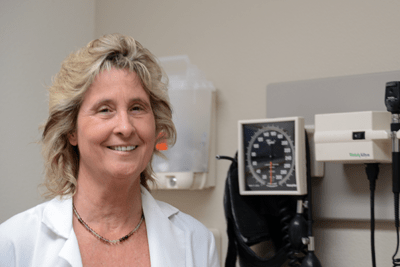Economic pressures from all sides are squeezing the lifeblood out of Clark County’s small, independent health clinics and physicians’ offices. Several have already closed their doors, and the ones that remain open are questioning how long they can survive.
Feeling the squeeze
“I ask myself, ‘how long can I keep this up?’” said Don Benz, M.D., who owns a physician’s office on 164th Avenue in Vancouver.
Sheila Mitchell, M.D., owner of the Spirit of Health Wellness Clinic in Salmon Creek, reported that in just the last few months, a physician just down the street went out of business, as did Dr. Hehn, an independent urologist who had served the Vancouver area for 40 years.
Mitchell cited Medicare and Medicaid payment reductions and increasingly onerous paperwork as primary reasons for the economic challenges facing independents today. When she talks with colleagues, she said, “overhead is the biggest complaint.”
For example, she said, insurance companies require more paperwork. In addition to that, Benz explained, Regulations pertaining to HIPPA, electronic health records and updates to the International Classification of Diseases (ICD) codes are continuing to drive up overhead and administrative costs. For example, he said, it costs $50,000 to install an electronic records system and $15,000 per year to upgrade it.
Local regulations aren’t helping, according to Benz, who said that when he opened his office on 164th, all he needed to do was remodel – the infrastructure such as streets and parking existed for 12 years. But, he said, the city of Vancouver charged him an $18,000 traffic impact fee.
Bigger clinics, Mitchell pointed out, have bigger budgets and more administrative help than smaller offices, which can help absorb overhead increases.
Benz cited a recent American Medical News (AMN) article stating that the annual physician services inflation rate rose just 1.3 percent over the last year, compared to the overall Consumer Price Index gain of 2.7 percent. According to the American Medical Association, there is a 20 percent gap between Medicare payments and physician costs – and the governing body for Medicare and Medicaid is calling for a 30 percent reduction in Medicare payment reduction beginning in 2013.
Finding the dollars
“There are fewer dollars to pay for health care,” explained Kurt Litvin, executive director of PeaceHealth Medical Group Vancouver, whether those dollars are coming from the federal government, commercial payers, or the patients themselves.
For both large and small organizations, said Litvin, it means “doing more with less.” But larger systems, he said, can spread the risk out more. For smaller organizations, “there’s only so much you can adjust,” he said.
“Too much overhead, not enough payment,” summarized Mitchell.
Competing with hospitals
Competition from hospital systems is another survival factor for smaller doctors’ offices. Benz said that hospital systems get paid two to three times more by Medicare than small offices, and they can negotiate more favorable contracts with insurers.
The AMN article referenced earlier said that in 2001, only three percent of hospital residents wanted work as hospital employees. In 2011, that number was 32 percent. The number of full-time physicians and dentists employed at community hospitals jumped 47 percent between 2001 and 2010, according to the American Hospital Association. In contrast to the below-inflation rate payment increase for physicians, the cost of inpatient hospital services rose 5.3 percent for the past year – roughly double the overall inflation rate.
“We have a difficult time recruiting people to work with us,” said Mitchell. “We can’t pay as much as hospitals pay.” Mitchell is currently writing a book, tentatively titled “The Fall of Medicine in America,” chronicling the problems she sees with the medical insurance industry and her own struggles to keep her practice open.
Alternatives
To survive, physicians are looking for alternatives to owning their own practice. Mitchell said that some doctors are choosing to practice “boutique medicine,” which is cash-based, and targeted to patients who can afford to pay for extras. Many doctors are restricting or eliminating Medicare and Medicaid patients. Others are closing their doors, such as Mitchell’s colleague, who now works for Kaiser Permanente.
Another alternative, said Litvin, is a growing trend of partnerships, called clinical integration networks. This trend, said Litvin, is driven not only by economic pressures, but also by the concept of “population-based management of health care,” part of the Obama administration’s health care reform package. In this model, said Litvin, there is the expectation that instead of competing, care providers will collaborate. However, he cautioned that practices with only one or two doctors have more difficulty joining such partnerships because they don’t have as much reach in the population as mid and larger sized groups, who are generally more geographically dispersed.
Litvin said “grouping up” is already starting to happen in Portland and Seattle, and will be “coming to Vancouver soon as well.”




